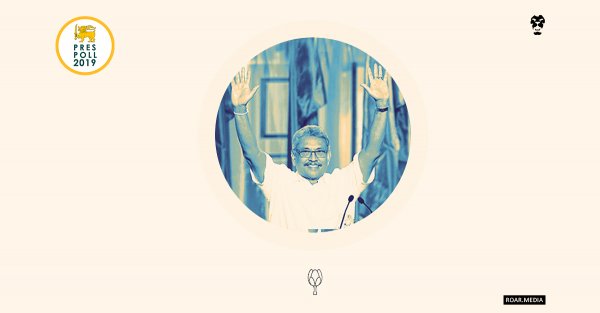
Sri Lanka, out of 168 countries, is currently the 83rd least corrupt country in the world and has seen a marginal improvement, going by Transparency International’s latest Corruption Perception Index (CPI). As of 2015, we’ve dropped from 85 to 83 – but before we pat ourselves on the back, we need to put things into perspective.
Reality Check
We’re currently on par with countries like China, and surprisingly, Columbia – both these countries have seen an immense improvement in the space of a year. Columbia, for instance, ranked at 94 in 2014 and improved by 11 paces. China’s progress has been even better: they’ve dropped from 100 to 83. Even more surprising is the fact that our neighbour India, generally perceived as being more corrupt and with whom we shared the 85th rank in 2014, has surpassed us and now ranks at 76.
Where scores are concerned, on a scale from 0 – 100, with 0 being highly corrupt and 100 being very clean, we’re at a whooping 37, while India is at 38. This definitely puts things in perspective and brings us that much closer to ‘highly corrupt.’
Regionally, we have much to learn from both India and Bhutan. Bhutan stands at 27 worldwide and ranks first regionally. Not too long ago we were the second best in the region, but India currently holds that title. We come in right after India – realistically however, neither India nor Sri Lanka can boast for taking the silver and bronze considering the fact that we’re over 50 paces behind Bhutan. Clearly we have a lot of catching up to do.
What Is A Corruption Perception Index Again?
Transparency International owns that the CPI is by no means an absolute verdict on overall corruption in a country, but is, rather, limited to corruption in the public sector alone. Because corruption is deliberately an under the table affair, it is difficult to find empirical data on corruption. Transparency International also contends that the exposure of scandals and corruption isn’t the best way to judge either, for that is only an indicator of how effective the prosecutors, the courts, or the media are in exposing and investigating these matters. Hence, they rely on the perceptions offered by “those in a position to offer assessments of public sector corruption,” as the most reliable method of calculating and comparing levels of corruption between countries. The data is drawn from “independent institutions in governance and business climate analysis” (if you require exact details, scroll down to the Data and Methodology section on their CPI 2015 page).
While the scope of the CPI is admittedly limited, it is nevertheless a useful tool: it is the public sector that ensures (that should ensure, would be more accurate) the smooth operation of a country and its resources. The presence of corruption in the public sector is itself a worrying assertion (which we are, most unfortunately, acquainted with a little too well) – the fact that we have moved up only by a snail’s pace, despite the change in regime, should be even more worrying.
Snail’s Pace, You Say?
Saying Sri Lanka has corruption is like saying the country is an island – rather indisputable, in that sense. We’ve seen some fluctuation, going by the CPIs of previous years (would you, for instance, believe that in 2012 we ranked 79 and, overjoyed by our success, took a tumble to 91 in 2013?). That we have improved, albeit marginally, cannot be denied – but it should be noted that we regressed substantially before improving, which isn’t exactly a compliment.
 Ranking over the years.
Ranking over the years.
How Can We Keep Improving?
It all comes down to the mechanisms we have in place to mitigate corruption, explains Shan Wijetunge, Senior Manager Advocacy, Transparency International Sri Lanka. Unfortunately for Sri Lanka, these mechanisms have not improved due to several reasons. Primary to this is the lack of human resources required to look into complaints against corruption. Organisations such as the Commission to Investigate Allegations of Corruption and Bribery face challenges in the HR department, for instance. For the number of complaints they receive, they require at least 500 – 600 police officers to conduct investigations, Wijetunge explains. Instead, they have only around 150 officers sifting through over 3,000 complaints.
“Our mechanisms to curb corruption require considerable strengthening,” Wijetunge asserts, adding that there is room for improvement.
When asked why Sri Lanka has only seen negligible improvement despite the change in Government, he explained that the promises made by the current regime are, for the most part, yet to be fulfilled for a significant change to register. “The Government has done a bit of work in this regard, but they need to do more. For instance, we need the Right To Information Act, as well as other policies, including open Government partnerships,” he said.
Wijetunge also added that a likely reason for the Government not meeting their promises could be due to the various other challenges they faced in 2015. “There are far too many issues they have had to deal with, so the progress in the anti-corruption area is slow,” he said.
Although many Commissions were appointed to look into corruption, including the Presidential Commission of Inquiry to Investigate and Inquire into Serious Acts of Fraud, Corruption and Abuse of Power, State Resources and Privileges (PRECIFAC), Wijetunge explained that these Commissions are yet to make a marked impact towards investigation and minimising corruption – hence the inching forward on the CPI.
If you’re curious about corruption indices like the CPI, take a look at the 2013 Global Corruption Barometer, also by Transparency International, which takes into account citizens’ views on corruption in the country. You’d be interested to know that the people’s faith in public institutions, such as the police, are yet to be restored.







